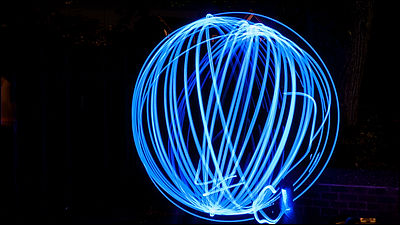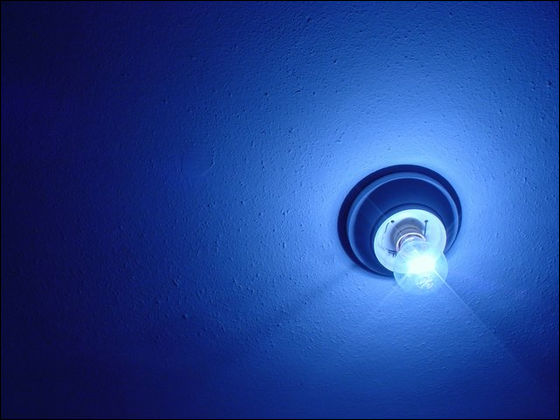When blue light is applied, it is found that insects such as flies and mosquitoes die, and a mechanism similar to the way human eyes are hurt by blue light

ByMark Walker
It was discovered that insects died when hitting the blue light, announced on December 9th that it was published in the online scientific magazine "Scientific Reports" of UK Nature Publishing Group. It has also been confirmed that the wavelength of light which is easily absorbed by species varies, and if cells and tissues are injured in a mechanism similar to the way blue light harms the human eye, they will die It is said that it is not.
Discovering that insects die by hitting blue light ~ Expecting to develop new insect pest control technology ~ | Press Release | Tohoku University - TOKOU UNIVERSITY -
http://www.tohoku.ac.jp/japanese/2014/12/press20141209-02.html
According to a press release of a research group of Associate Professor Hori Masatoshi of Tohoku University Graduate School of Agriculture, recent research has shown that visible light (400-500 nm light, so-called blue light) with short wavelength injuries human eyes Although it became obvious, the lethal effect of visible light on relatively complicated animals including insects has not been reported so far. On the other hand, ultraviolet rays short in wavelength such as UVC (100 to 280 nm) and UVB (280 to 315 nm) are known to have strong toxicity to living things, and insects and microorganisms also die when they are applied. However, for the longer wavelength ultraviolet rays (UVA: 315 to 400 nm), no obvious lethal effect on insects has been reported, and since light is more toxic to organisms as the wavelength is shorter, it hits visible light There is a background that it was not thought that comparatively higher animals such as insects would die alone.
In this study, LED light of various wavelengths is applied to insects to investigate the insecticidal effect. First, the light intensity of the LED is set to about one-third of the blue light contained in the direct sunlight, and the drosophila When pupa was exposed to blue light, the pupa could not emerge and died.

Since it was confirmed here that two wavelengths of 440 nm and 467 nm showed high effect among the same blue light having a wavelength with high effect and a wavelength with low effect, it was confirmed here that it was 467 nm for eggs, larvae and adults When examining the insecticidal effect of light, it turned out that both died by irradiation. Next, when blue light was applied to the pupa of a mosquito (Chikai eka), it also died. However, the only effective wavelength was 417 nm.

In addition, the mosquitoes are more resistant to blue light than Drosophila, and it was necessary to have light intensity of about 1.5 times that of blue light contained in direct sunlight to kill all mosquitoes. Furthermore, the result that the insecticidal effect of 417 nm is also observed in eggs. Moreover, not only flies and mosquitoes but also pupa of Hirata Kokunostomoduki which is a large pest such as wheat flour have a very high insecticidal effect, with a light intensity of about one fifth to one quarter of direct sunlight, It was confirmed that all the pupaes died.
As the presumed insecticidal mechanism of blue light, the effective wavelength differs depending on the species of the insect, it is presumed that the insecticidal effect is similar to the injury mechanism against human eyes, and it is presumed that the light wavelength It is speculated that different wavelengths of light will be absorbed by the insect's internal tissues, reactive oxygen will be generated, and cells and tissues will be injured and die.

Based on the results of this research, it is expected that development of a pest control device that can easily insect pests can be expected by hitting blue LED light or the like to the place where pests are generated in the future, and devise the wavelength , It is said that there is a possibility of becoming a clean insecticidal technology applicable to various insect pests such as sanitary pests, agricultural pests, cereal grain pests, livestock insect pests etc.

ByMaX.
Related Posts:
in Science, Posted by darkhorse







